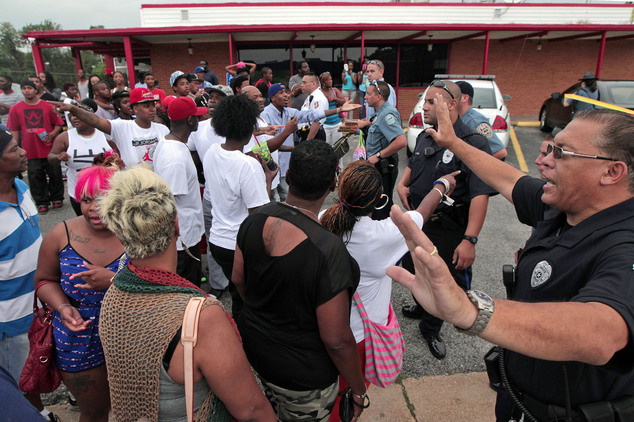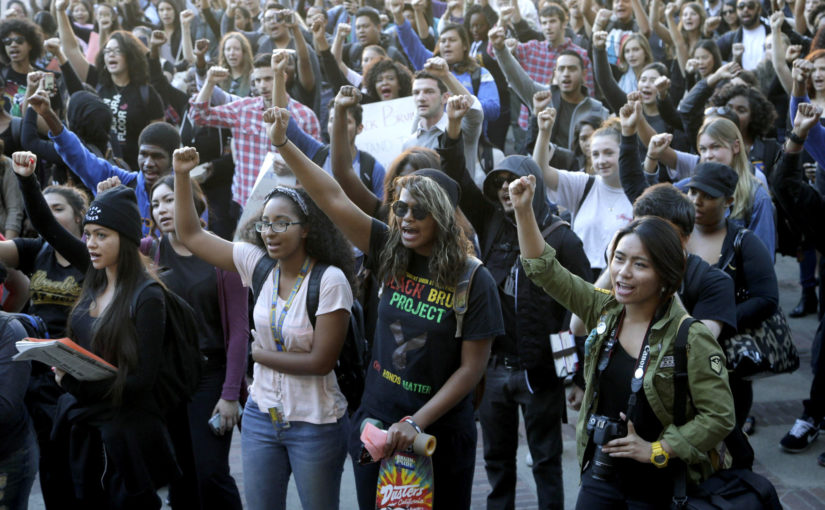In his Anger Workbook, Dr. Les Cater identified three fundamental sources of anger:
1) Preservation of essential needs
2) Preservation of self-worth
3) Preservation of core beliefs.
Using this three-category model, you can analyze and dissect the motivation behind anger—both in others and yourself.
Let’s start with the difference between a basic and a fundamental. While in many respects they are synonymous, there comes a point where they split. That is where a basic is an introduction to a subject while a fundamental is a premise upon which a system is based and from which it rises. That’s why looking at these categories as fundamentals is important. When you look past the details of a specific incident, you can see these sources—and recognize where the anger comes from. Understanding why, you can do something about it.
Moving onto a fast explanation of the three categories:
Essential needs are those things necessary for our survival and to maintain our lifestyles. When they’re threatened, we respond with anger—after the fear. (Think of your reaction when someone almost hits your car. You need a working car, and the money it would cost to fix it.)
Self-worth isn’t just self-esteem, it’s also self-respect, pride, social status, and how others see us. Although the last is a bit of a self-eating watermelon because what we tend to give more weight to—and will become both violent and self-destructive over—is what we think others think of us. Meanwhile, we’ll blithely continue self-serving behavior that actually negatively influences others’ opinions of us.
Two points about that last. First is why. Man isn’t as much a rational animal as a rationalizing one. There’s a perceived profit in the behavior, so we rationalize doing it. Second is a warning. People who behave this way the most are the ones most tetchy about perceived slights. How dare you call them a ___ (fill in the blank) for being a ____ (fill in the blank).
Core beliefs . . .
Well, short version is core beliefs are how we organize the universe and our place in it. We’re seriously married to these ideas, and we will ferociously protect them—regardless of how much or little sense they make or how true they are. They are our TRUTHS™. They not only create, but maintain our individual reality. They literally create and maintain the whole of our universe.
Another way of looking at it is we need our beliefs to simplify life enough so we can get through the day. We function within boxes of our own—if not making—choosing. See, infinity is an awfully big place. Beliefs are the mental walls we build to protect ourselves from seeing how big. Such a view would leave most of us curled up and cowering in a corner. Our beliefs create a model of life and the universe that is small enough for us to grasp. So while “yay for beliefs,” they can also keep us inside our own mental and emotional prisons. But it’s a prison we want to be inside because outside is too big and scary. Anger is a fast and easy way to keep those walls intact.
We’ll come back to protecting beliefs because it’s a big part of anger and conflict—including how and why we get there.
Where things become interesting is when we realize how much overlap there is in these three categories and, at the same time how much of our self-identify is wrapped up in them. But let’s stick just with overlap for a second.
Even with these fundamentals, anger isn’t exactly a single cause issue. For example when a core belief is perceived to be challenged, it’s commonly interpreted as an attack on our self-worth, as well. It’s not about the idea anymore, it’s a personal insult. It’s not a question regarding our beliefs, it’s an attack. (If the belief is wrong—what does that say about our intelligence?) This is a big part of why people get so hostile and angry when their beliefs are questioned.
Before we go on, finish this sentence, “I’m a ______ (fill in the blank).”
First things first: Do you take pride from that identity? Your recognition of that emotional investment is important. Not because you have it, but other people do, too. Ignoring or forgetting said investment is a fast track to conflict, triggering belligerence in others and your own aggression.
Now ask yourself: How many of your beliefs are attached to that identification? What do you have to do, believe, and think to qualify as whatever that is? How does that self-identification influence how you look at the world and your expectations of how you’ll be treated? How does it influence your obligations to others (what they can expect from you)?
These simple questions show the connection between what we believe, our self-identities, and how we approach the world. They show where our reactions come from when our self-worth and beliefs are challenged. Think back to your last “you don’t treat me like that” reaction. What beliefs were violated?
In fact, let’s use that as a side track. I’m going to give you good way to remain both calm and nonemotionally reactive in a situation that could devolve into conflict. When you start to feel angry, ask yourself which of the three categories do you think is threatened? This assessment gives you a momentary pause, instead of following the—and I very specifically use this word—habit of reacting in anger. This allows another part of your mind to come up with a different response that isn’t habitual, anger driven, and likely to cause more problems.
Using anger to preserve beliefs opens the flood gates to all kinds of aggressive and hostile behavior by us that elicits the same response from the other person. This is important because although we perceive all slights as intentional and malicious—often they aren’t. When you aggressively respond, even if you weren’t in a fight before, you’re in one now.
Back to core beliefs being threatened, some belief systems require a villain. If you accept this ideology, someone else automatically becomes your enemy, oppressor, or target. It’s part of the identity of being a _____ (fill in the blank). The very existence of those hated others is a threat to your core beliefs. Hence, you’re always mad at them. To the rational mind, this seems silly. But to another part holding the benefits of identity of being a ______(fill in the blank) far outweigh the inconvenience of having an enemy.
Worse is how easy it is to slip into perceiving anyone who doesn’t believe the same as ‘us’ (the right, good, and knowledgeable) is evil, stupid, and wrong. It’s no longer just an established enemy. Anyone who doesn’t follow the exact same orthodoxy becomes your enemy. When you are surrounded by enemies, you interpret one of ‘those people’ just opening his or her mouth as an attack. And since he is already attacking our cherished beliefs, whatever we do to him is acceptable—because he deserves it. Even if he didn’t do anything, he still deserves it just because he’s a _______ (fill in the blank).
That last bit is integral to justifying much bad behavior after the fact and giving ourselves permission to act in the first place. We know what we’re doing is wrong, but because of the anger generated by the belief, it becomes okay to act.
(By the way, I just skimmed by something important. Chronic anger can also be used as a way to keep us from examining—much less changing—the very beliefs that cause us pain and anger. This isn’t just a Catch 22, it’s a weird perpetuation and constant seeking of external targets as a distraction from having to look at ourselves. The world is constantly showing us the belief is askew yet our anger prevents us from seeing the source of the problem—our own beliefs and how they affect our behavior. Such people are constantly on the look out for people to focus their anger on. Being targeted by them is often shocking because of the dragon’s flame’s intensity over a small, trivial thing. You can call such people rage-o-holics because they use explosions of anger like an alcoholic uses going on a bender. It’s a form of venting their rage, as well as self-soothing. This behavior allows them to get rid of their pain and anger, but not change the beliefs causing them.
This brings us to an important point. There’s a difference between facts and belief.
While we can—and often do—use cherry-picked facts to support our beliefs, a belief is not a fact. But we believe it is and that directs our behavior.
A few key points useful in spotting the difference: First, facts are pretty widely recognized. For example, the effects of what we call gravity are pretty much a fact. (Point of interest, your knowledge of this fact is what keeps you from stepping off the edge of a tall building in everyday life.) Second, there is much less emotional investment with facts than there is with beliefs. How emotionally invested in your knowledge of gravity are you? Beliefs need emotions to be sustained. Third, just because a lot of people believe something doesn’t make it true; it just makes it a popular belief.
Now you might be thinking I’ve been talking about religion. Well, that’s a part. Here is where things get . . . interesting . . . about beliefs. There are many people in our modern secular world who have countless beliefs—but won’t admit it. In fact, they show downright scorn for beliefs—especially other people’s. The reason they have such contempt for beliefs? In part, it’s because they look down on the beliefs of others as superstition, ignorance, and weakness. To a degree that’s because they pride themselves on how intelligent, enlightened, and sophisticated they are. And partly, they are absolutely convinced that theirs aren’t beliefs, but rational conclusions based on logic and facts. This gives their beliefs the same absolute authority—and even morality—as religious beliefs. But theirs are better . . . because they aren’t beliefs, but facts. (Yes, it’s a self-eating watermelon.)
Such people can certainly be as adamant and fanatical about their “non-beliefs” as any religious zealot. And they can be just as hostile, aggressive, abusive, and violent to preserve these core beliefs and force them on you. Knowing this, start looking at how ferocious someone can get to preserve deeply held philosophies. And more importantly, how ferocious you can get if you feel someone has violated one (or more) of your beliefs—whether that’s your faith, how you feel you should be treated, what the world owes you, what you owe others, how people should act, challenging your ideology, or daring to hold a different one.
If you can keep from falling into this trap, you can greatly reduce the conflict in your life.
It’s important to recognize when our self-worth and core beliefs are threatened, it’s very easy for us to react with anger. Anger is perceived power. It’s a rush. We feel emboldened to right wrongs. Anger also gives us permission to do things we know are wrong. It’s the pass we use to give ourselves permission to do all the things we claim we aren’t. “I’m a peaceful, open-minded person, you judgmental son-of-a-bitch!”
Wait . . . what?
A Roman named Horace once said, “Anger is a short madness (insanity).” I find that anger is often far more self-serving than that. Many people’s use of anger allows them to give themselves permission to behave in ways they recognize as wrong and know are hurtful, but are —most of all — self-soothing. In venting that anger, we feel relief. If something causes us emotional discomfort, the siren’s song of anger tells us, “Go ahead. Do something that will make you feel better.”
While it might not lure us to our doom, the truth is that giving into this impulse usually makes things worse. The momentary satisfaction of lashing out at someone—whether to punish them, share the pain, or preserve our beliefs or our concepts of self-worth—often provokes a negative response from those who can defend themselves and injures those who can’t. Or perhaps, instead of acting immediately, the angry person waits and seeks revenge through other means.
Two people (who have given themselves permission to self-sooth by acting out) create an ugly escalation where both parties are equally guilty of misconduct. Yet, both are convinced they are the victim in the situation—which gives them the moral high ground for their bad behavior. Often their blatant aggression is justified as, “I was just defending myself.” But more often, the excuse is simply, “I was angry.” In these modern times, there has been an emphasis on expressing feelings rather than controlling them. Many people have been conditioned to and have given themselves permission to be controlled by their emotions.
And why shouldn’t they? Given technology, social safety nets, plentiful resources, and a social abhorrence of physical violence, a life of letting oneself emotionally act out is sustainable. A person can emotionally fly off the handle and have little or no fear of physical repercussions. This tendency has been further accelerated through the Internet and texting where physical proximity is not an issue. People give themselves permission to go to any emotional, verbal, and behavioral extreme in order to win the situation. While physical violence is rare, you have individuals and groups with long-standing anger using a new tactic. If you confront them about their behavior, they first lash out at you and then run to authority (or the administration or human resources) to condemn you. This isn’t defensive action, it’s aggression. One way or the other, they’re going to ‘win.’ While we’re at it, large sections of the population have no fear of losing their low-paying jobs or going to jail because of their emotional outbursts. Another perception of winning, is simply walking out of relationships.
I tell you this not as a condemnation of society or to scare you, but to give you an idea of what you are dealing with. Many people have weaponized their emotions, concepts of self-worth, and beliefs and have no hesitation about emotionally lashing out at you. There are still other people who are the equivalent of giant exposed nerves who are like undetected mines that explode when you step. Or, knowing about them, you become so overly concerned about handling them with kid gloves your stress level goes through the roof.
Oscar Wilde once notoriously quipped, “A true gentleman is one who is never unintentionally rude.” If you consider it, there’s a double message there. Yes, you should be careful about being unintentionally rude, hurting people’s feelings, or stepping on their concepts of self-worth or beliefs. And quite frankly, if you find you accidentally have do not hesitate to apologize—within reason. If someone snaps at you, check to see if you’ve somehow inadvertently stepped on their toes. If yes, it costs you nothing to apologize in order to keep the peace. Since acknowledgement is what most people seek, the situation is quickly and painlessly resolved, and everyone can go about their business.
Unfortunately, if feeling outraged over being attacked, you choose to snap back . . .
Having said this, there is a time and place to call people on their bullshit and bad behavior. But make it an informed and deliberate decision. This puts you first and foremost in control of yourself. In general that puts you ahead in the game. And that strongly influences how others will see you and judge your actions. Now instead seeing two screaming assholes, there’s a better chance the witnesses will align with you (because odds are they’re tired of his noise, too).
Second, being in control of yourself, you can keep you from mirroring his behavior. This, too, keeps you from crossing lines that would lose you support or get you into trouble if called upon to answer for the conflict. (In this current climate, many people don’t lose gracefully. Plan on the loser running to an authority figure and claiming victimization.) Not allowing yourself to get angry keeps you thinking strategically and not reacting emotionally. It’s when we get angry about these perceived attacks on our self-worth and beliefs that we make mistakes and cross the line. This gives the loser’s claim of victimization credibility when you actually did say or do something in reaction.
Don’t give him that ammo to use against you.
End Part I.









